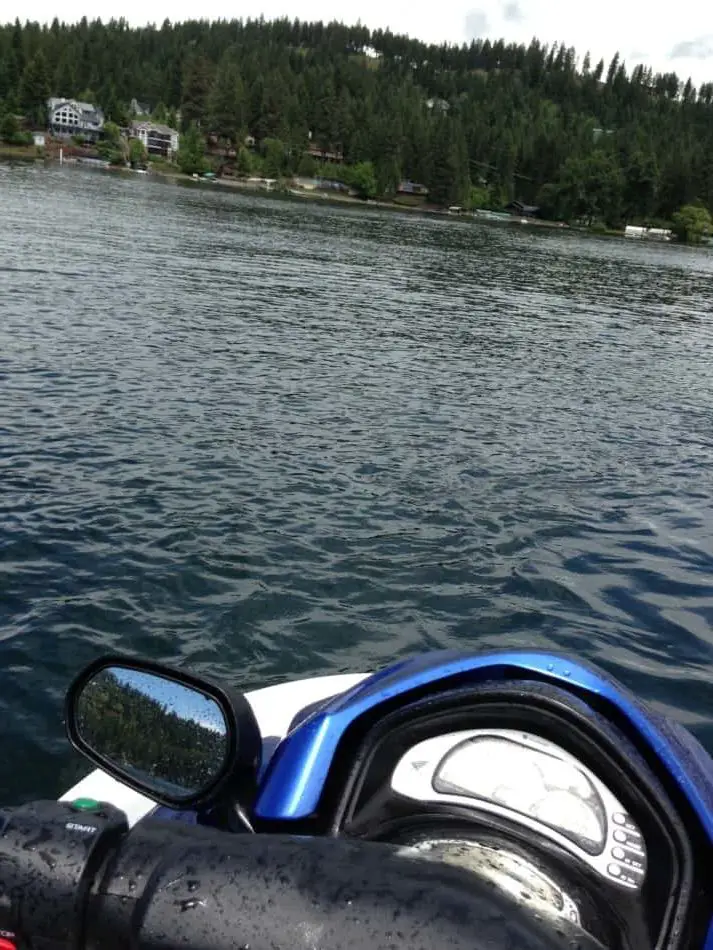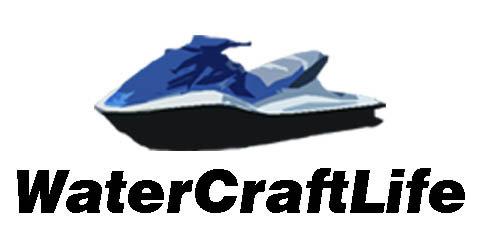
The speed on a jet ski can be intense. Some supercharged engines can go anywhere from 60 to 80 mph. That is much too fast to remain safe all the time. Think of jet skis as the motorbikes of the water. You are very exposed, and it takes concentration and strength to stay safe while riding. This article will detail the different ways that you could be injured on a jet ski and then lay out some protocols for safely driving a jet ski so that you can limit your exposure to these types of injuries.
Can you get hurt on a jet ski? Yes, you can get injured on a jet ski in several ways. Getting thrown from the craft is the most common due to hitting a large wave, jumping boat wakes, turning sharply, or just losing balance. If you get into an accident you are more susceptible to injury as your craft is smaller than if you got in an accident in a boat.
How Can You Get Injured On A Jet Ski?
For the novice, it is recommended to ride along with some that have more experience before trying to drive the jet ski yourself. Some of the most common injuries on jet skis are concussions, spinal cord injuries, and wrist or ankle sprains or breaks. These injuries are avoidable by staying at safe speeds, practicing safe boating techniques while around other boaters or jet skiers, and possibly wearing protective equipment. The best way to be safe on a jet ski is to drive safely and sanely, obey speed laws, and be aware of others on the water at all times. Let’s look at each of these types of injures to understand how they might be sustained while you are riding a jet ski.
Most common Jet Ski Injuries:
Concussions
One of the most common injuries on a jet ski is a concussion. This type of injury means your brain has been injured and is a severe head injury. Concussions usually happen from trauma to the head, but can also occur from things like whiplash. Common ways that people get concussions on jet skis are if they start or stop too quickly and hit their head on the jet ski hull or handles.
Also, if you are moving fast and then fall off into the water, the force of landing in the water can cause brain injury. Finally, concussions happen on jet skis when a passenger is riding and hits into the head or body of the driver of the jet ski. All of these injuries can be limited by wearing protective headgear like a helmet while operating a jet ski. This is especially true if you are driving at high speeds and are attempting tricks on your jet ski.
Spinal Cord Injuries
Whiplash, caused by moving at high speeds and then suddenly being stopped in motion, is one of the most common ways to sustain a whiplash injury. Also, if a driver is traveling at high speed on a jet ski and then falls into the water, the force of the water impact can cause spinal cord injuries such as whiplash or worse. The best bet to protect yourself from these types of damages is to drive at appropriate speeds and avoid maneuvers that could fling you from the jet ski while turning at speeds.
Wrist And Ankle Injuries
While driving the jet ski, you are holding the vehicle by the handlebars. If there are choppy waves or wakes that you drive through, this can cause the vehicle to thrash around. These types of violent thrashing movements can cause wrist injury that can leave you with a sprain or even broken wrist.
Also, your ankles are exposed and in contact with the hard surface of the jet ski hull as you travel along. These same types of violent thrashing movements can cause them to be thrown into the hard hull of the craft and injured. Safe speeds and even wrist braces can help to protect your joints from being hurt while riding your jet ski.
What Are Safe Speeds On A jet Ski?
Usually, the body of water you are on will have posted speed limits. Always remember to idle speed within 200 feet of shore, docks, or buoys. The six and sixty rule applies whenever you see people on the water around you. Slow to six knots if within 60 meters of others. Safe speeds are also a common sense thing. Even if posted speed limits are around, know the limits of your craft and your jet ski abilities. Drive safely at all times.
Different weather conditions will determine safe speeds. Most lakes in my area have a speed limit of 55 miles per hour. That is fast on a jet ski. If you are in rough water, 20-30 mph is fast enough if you don’t want to get thrashed around.
Conclusion
Injury on the water is never far away. The safest way to ride your jet ski is to be aware and focused. The fact that you are exposed and physically challenged and fatigued while riding a jet ski makes it a recipe for injuries to occur. By following safe boating procedures and using common sense, you will be able to jet ski in fun and safe ways.
Protective gear like helmets may not be required for some places to jet ski. However, it is always a good idea to keep yourself protected, especially when attempting to drive at high speeds or while doing tricks from wakes or jumps. Jet skis have the potential to be very dangerous crafts. Follow the laws and the tips listed here and make sure that you won’t become one of the statistics.

